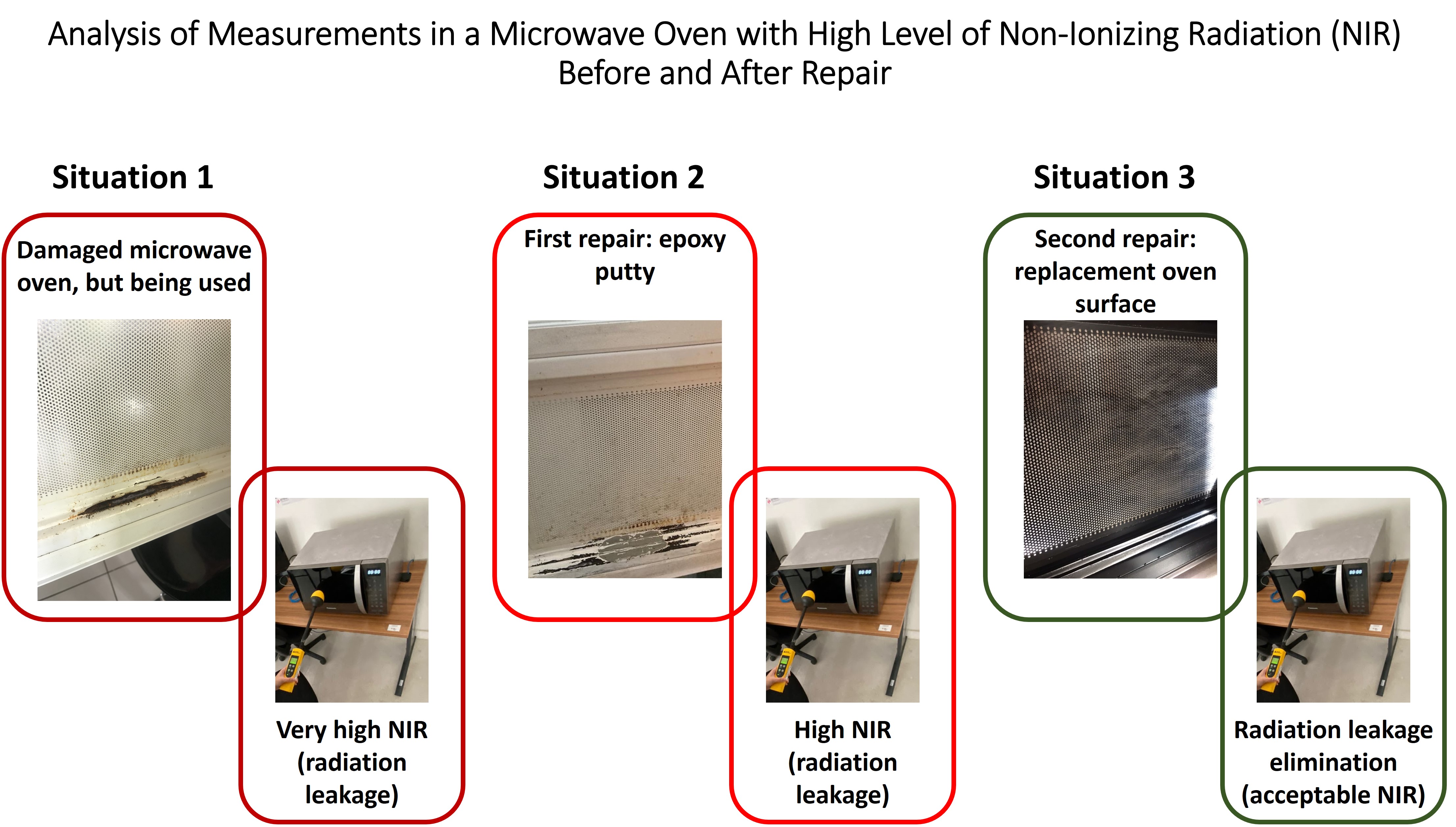Analysis of Measurements in Microwaves Oven with High Level of Non-Ionizing Radiation (NIR) Before and After Repair
DOI:
https://doi.org/10.14209/jcis.2024.16Keywords:
Microwaves Oven, Non-ionizing Radiation, NIR, Measurement, Radiation Leakage.Abstract
Non-ionizing radiation is the subject of several applications, such as the microwave oven, which is very popular. Its use is characterized by direct user operation and reduced distances between users and the NIR source. Therefore, the level of human exposure in this scenario deserves attention as it is a potential cause of biological effects. In this sense, this paper presents the measurement of a microwave oven with a high level of NIR (above the limit defined by the standard) before and after two types of suggested repairs: the use of epoxy putty (Repair 1) and the replacement of the external surface of the oven (Repair 2). The definitions of measurement methodology, based on FDA and INMETRO standards, are presented and discussed. Finally, we describe an analysis of the efficiency of these repair methods aiming at the safety operation.
Downloads

Downloads
Published
How to Cite
Issue
Section
License
Copyright (c) 2024 Julia Silva, VICENTE ANGELO DE SOUSA JUNIOR, Marcio Rodrigues, Fred Pinheiro, Gutembergue Silva, Halysson Mendonça, Fernanda Galdino, Ricardo Silva (Author)

This work is licensed under a Creative Commons Attribution-NonCommercial 4.0 International License.
Authors who publish in this journal agree to the following terms:
- Authors retain copyright and grant the journal right of first publication with the work simultaneously licensed under a CC BY-NC 4.0 (Attribution-NonCommercial 4.0 International) that allows others to share the work with an acknowledgment of the work's authorship and initial publication in this journal.
- Authors can enter into separate, additional contractual arrangements for the non-exclusive distribution of the journal's published version of the work (e.g., post it to an institutional repository or publish it in a book), with an acknowledgment of its initial publication in this journal.
- Authors are permitted and encouraged to post their work online (e.g., in institutional repositories or on their website) before and during the submission process, as it can lead to productive exchanges, as well as earlier and greater citation of published work (See The Effect of Open Access).
___________
Accepted 2024-09-23
Published 2024-09-27


